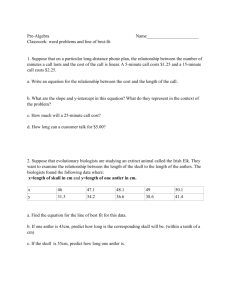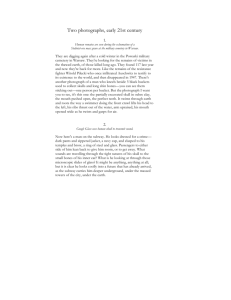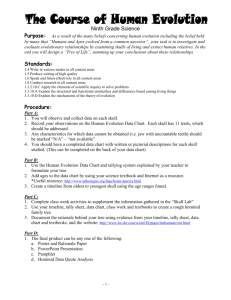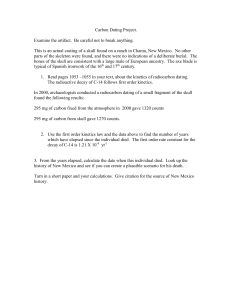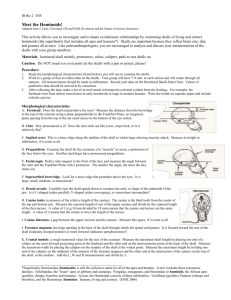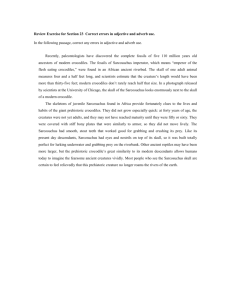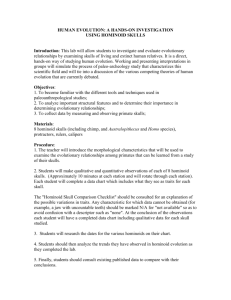Skull Comparison Lab
advertisement
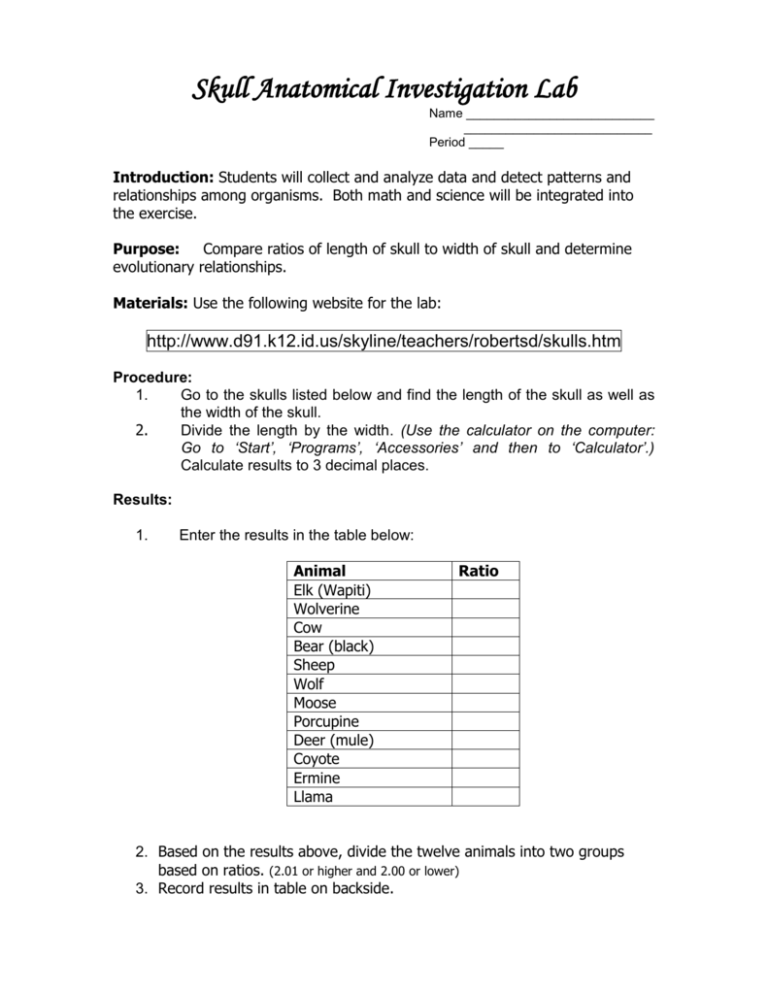
Skull Anatomical Investigation Lab Name ___________________________ ___________________________ Period _____ Introduction: Students will collect and analyze data and detect patterns and relationships among organisms. Both math and science will be integrated into the exercise. Purpose: Compare ratios of length of skull to width of skull and determine evolutionary relationships. Materials: Use the following website for the lab: http://www.d91.k12.id.us/skyline/teachers/robertsd/skulls.htm Procedure: 1. Go to the skulls listed below and find the length of the skull as well as the width of the skull. 2. Divide the length by the width. (Use the calculator on the computer: Go to ‘Start’, ‘Programs’, ‘Accessories’ and then to ‘Calculator’.) Calculate results to 3 decimal places. Results: 1. Enter the results in the table below: Animal Elk (Wapiti) Wolverine Cow Bear (black) Sheep Wolf Moose Porcupine Deer (mule) Coyote Ermine Llama Ratio 2. Based on the results above, divide the twelve animals into two groups based on ratios. (2.01 or higher and 2.00 or lower) 3. Record results in table on backside. Group 1 Ratio 2.01 or higher Group 2 Ratio 2.00 or lower 4. Do the members of each group share common characteristics? them. Name 5. Are there any exceptions among the 12 animals that did not naturally fit into the two groups? _________ If so, list them. 6. What evolutionary relationships do individuals within the two groups share with each other? 7. Why do you suppose the differences evolved? Now, go to the Bird Skull Collection. 1. Find 8 birds, 4 being meat-eating carnivorous species (owls, hawks, vulture, eagles, petrel, cormorant, murre, murrelet, pelican, gulls, etc.) and 4 being seedeating species. 2. Using the same methods as for the mammals, determine the ratios for the eight birds. 3. List below in the chart. Carnivorous Birds ratio Herbivorous ratio (Seed Eaters) Birds 4. Do the same relationships exist for birds as well as for mammals? Explain. Conclusion:
